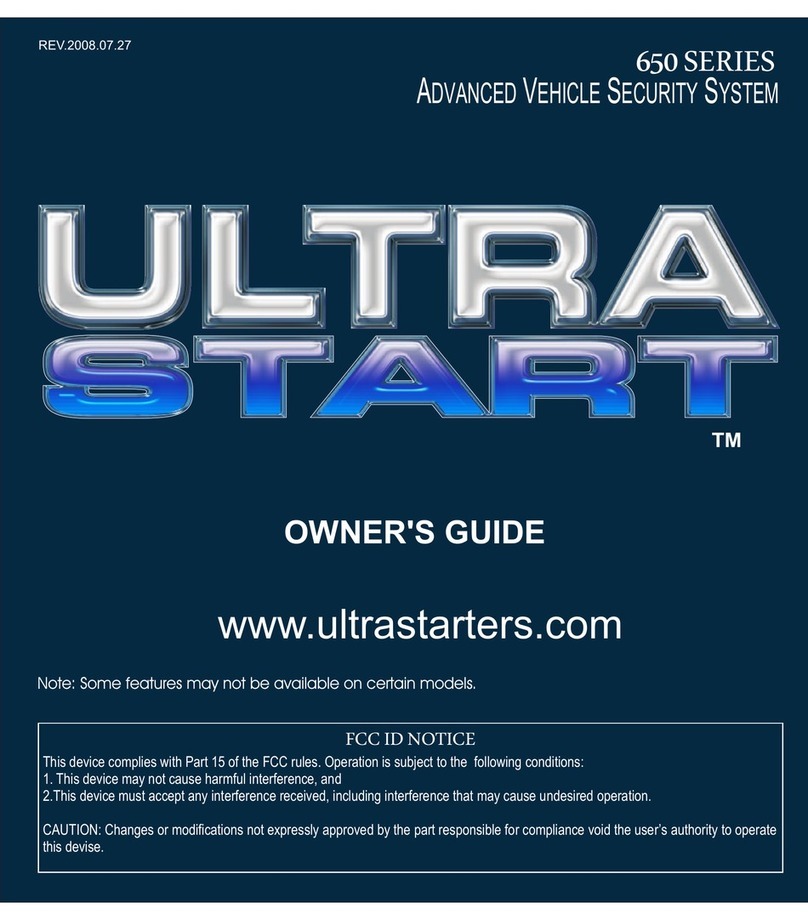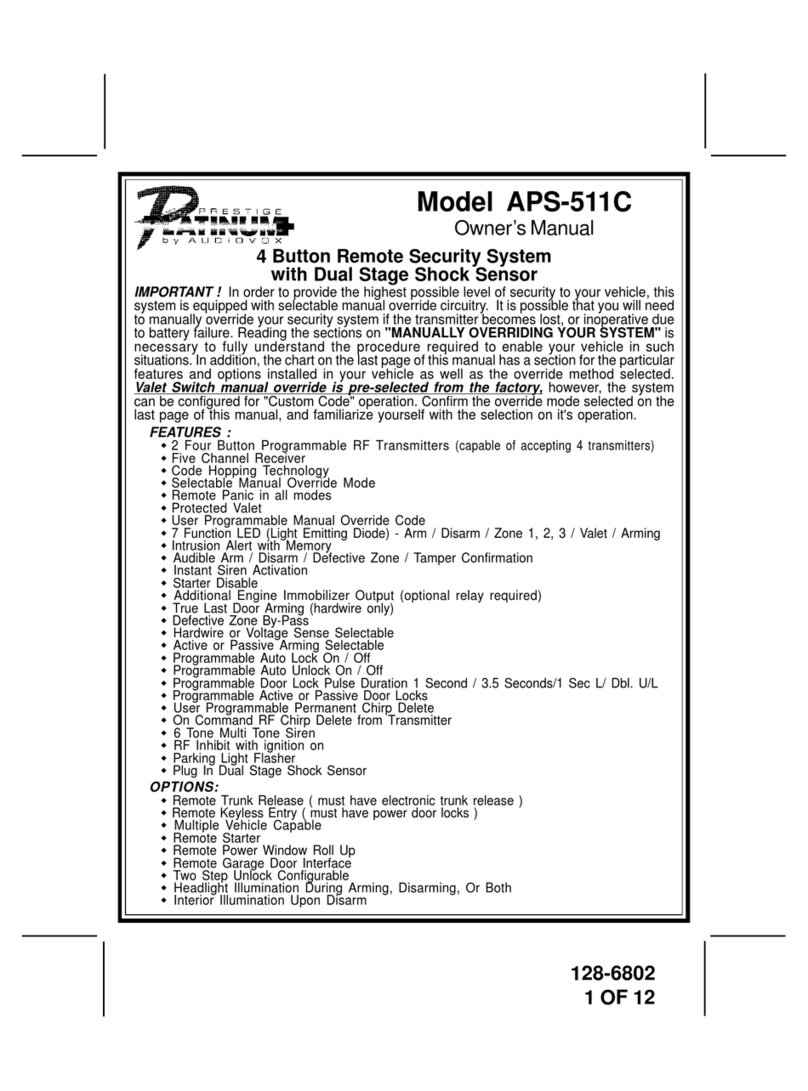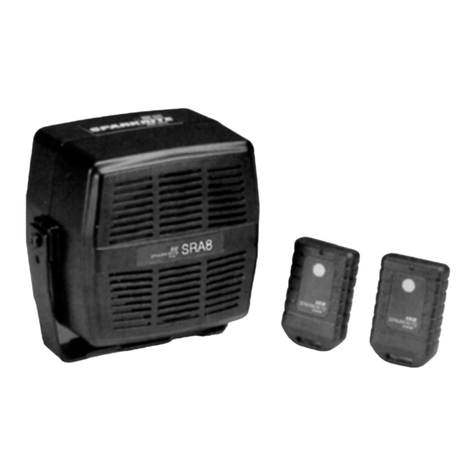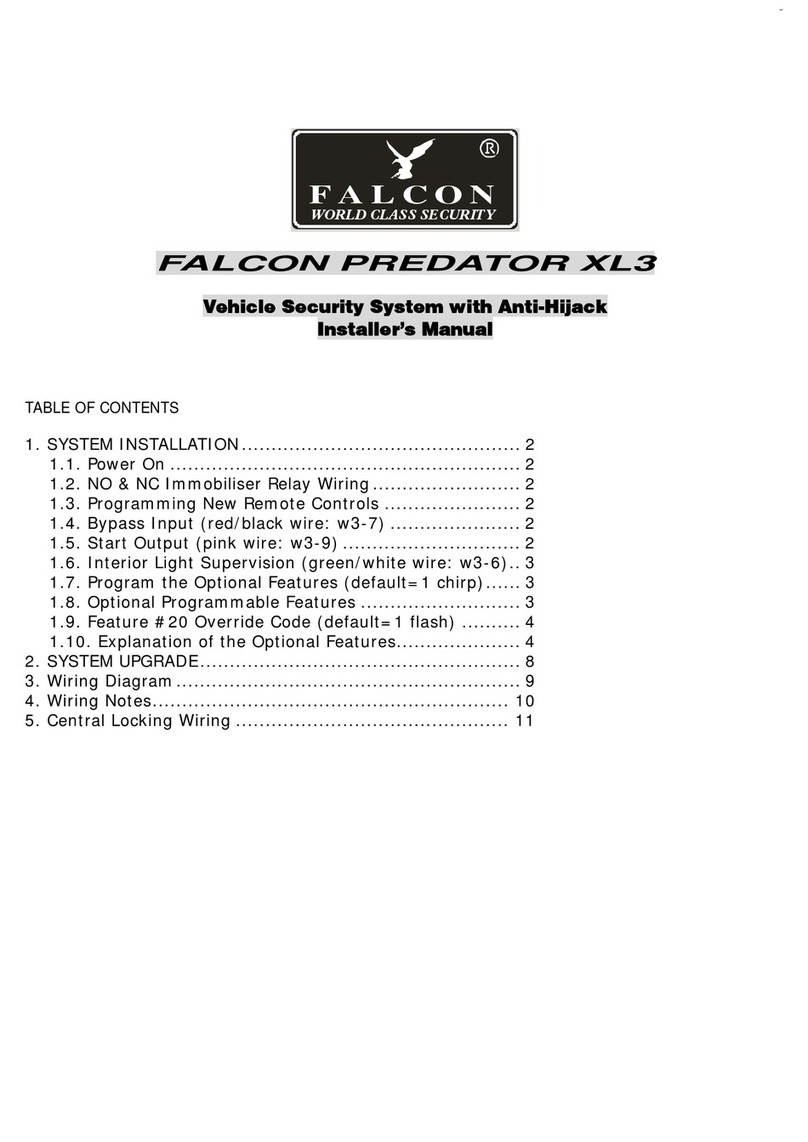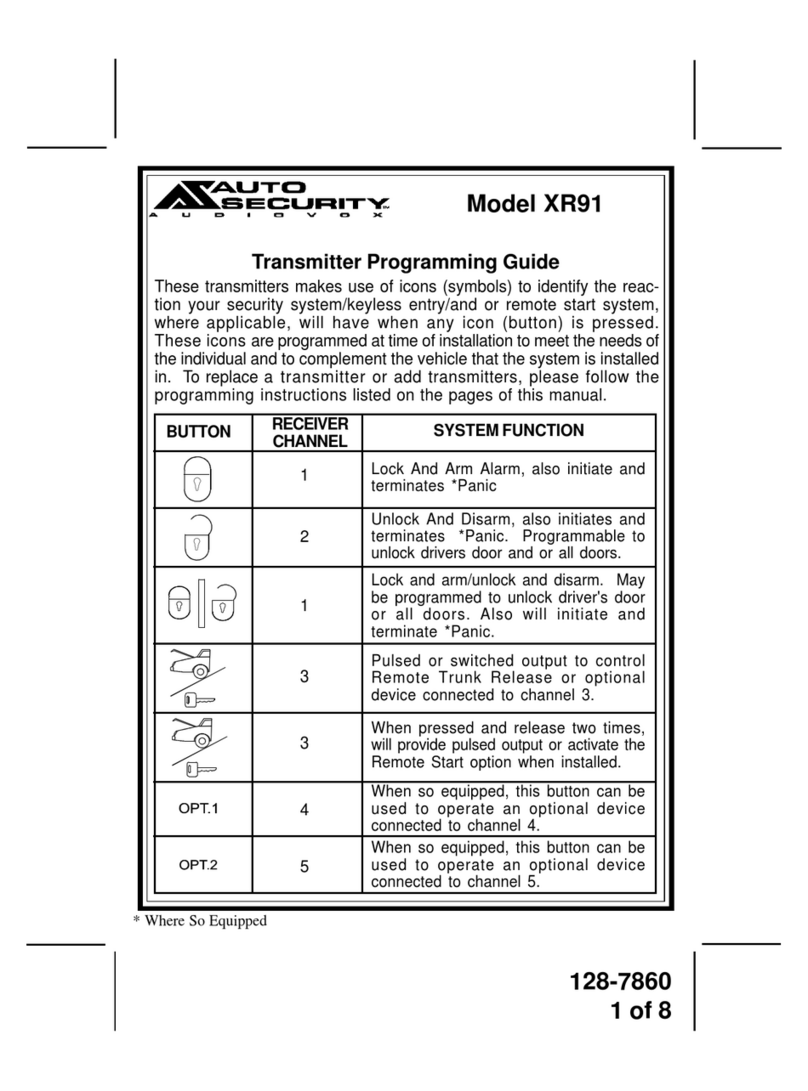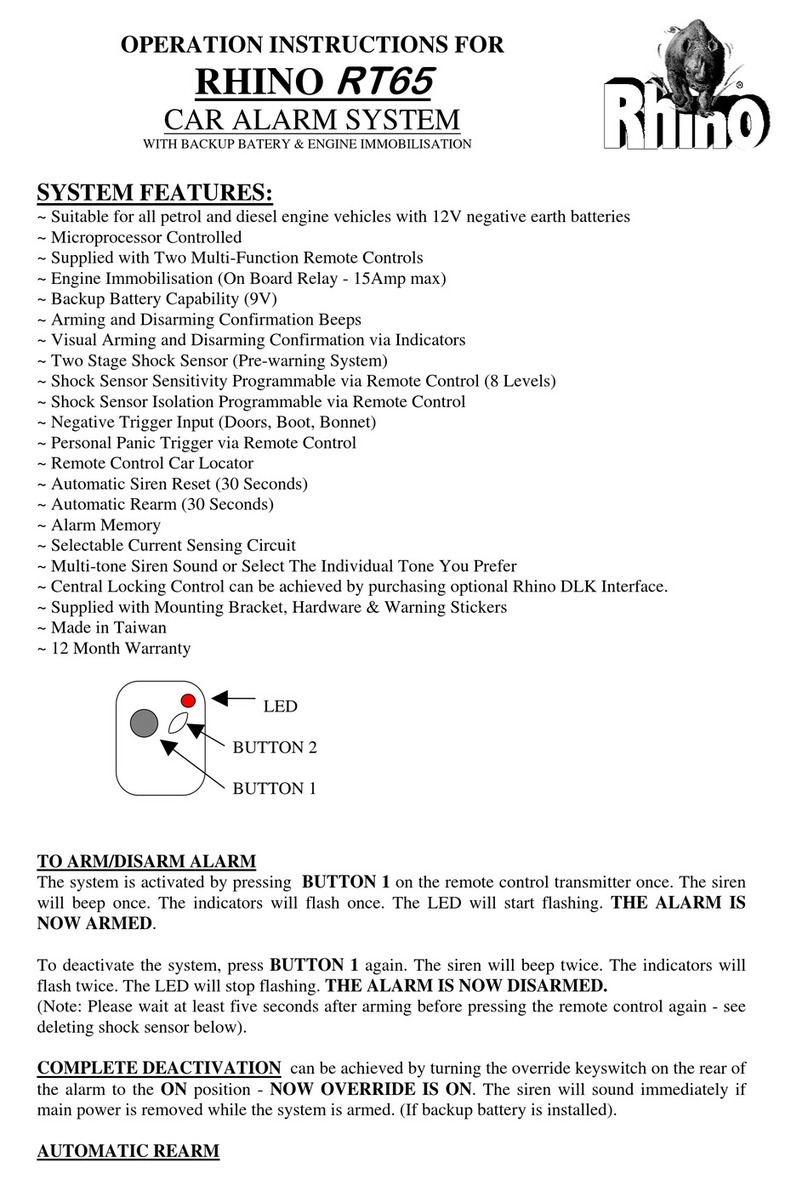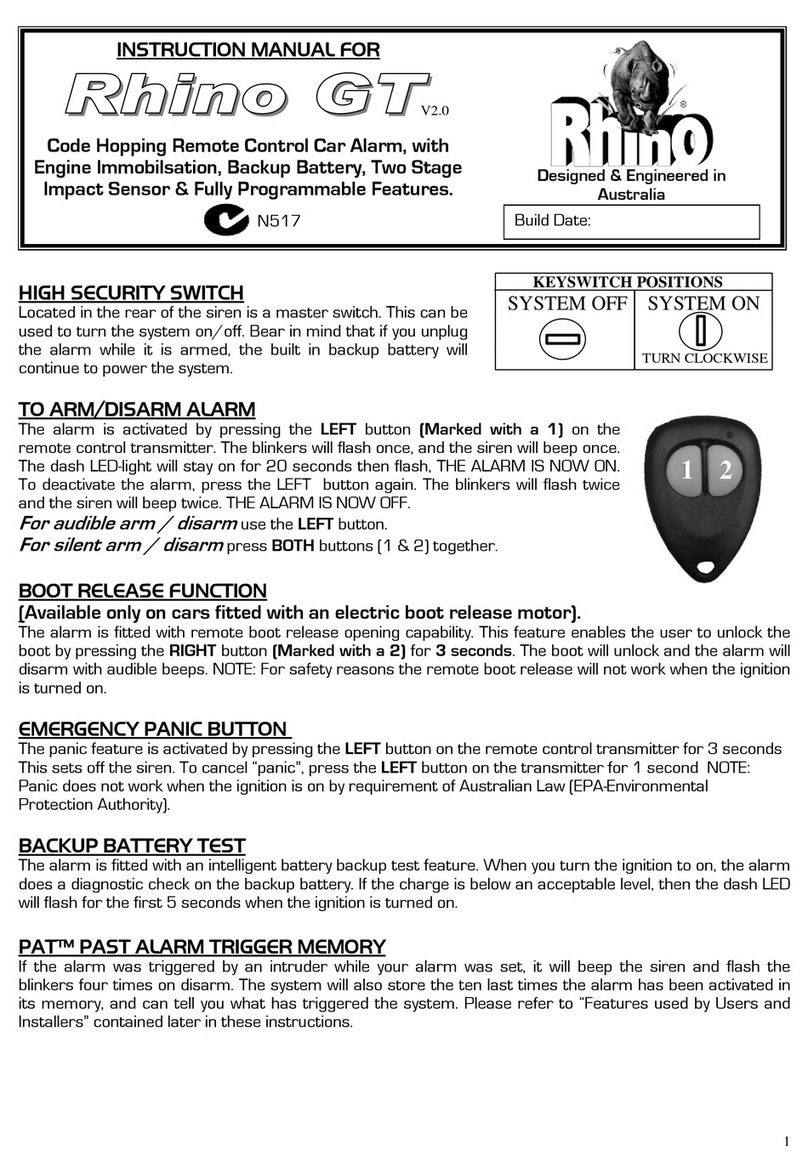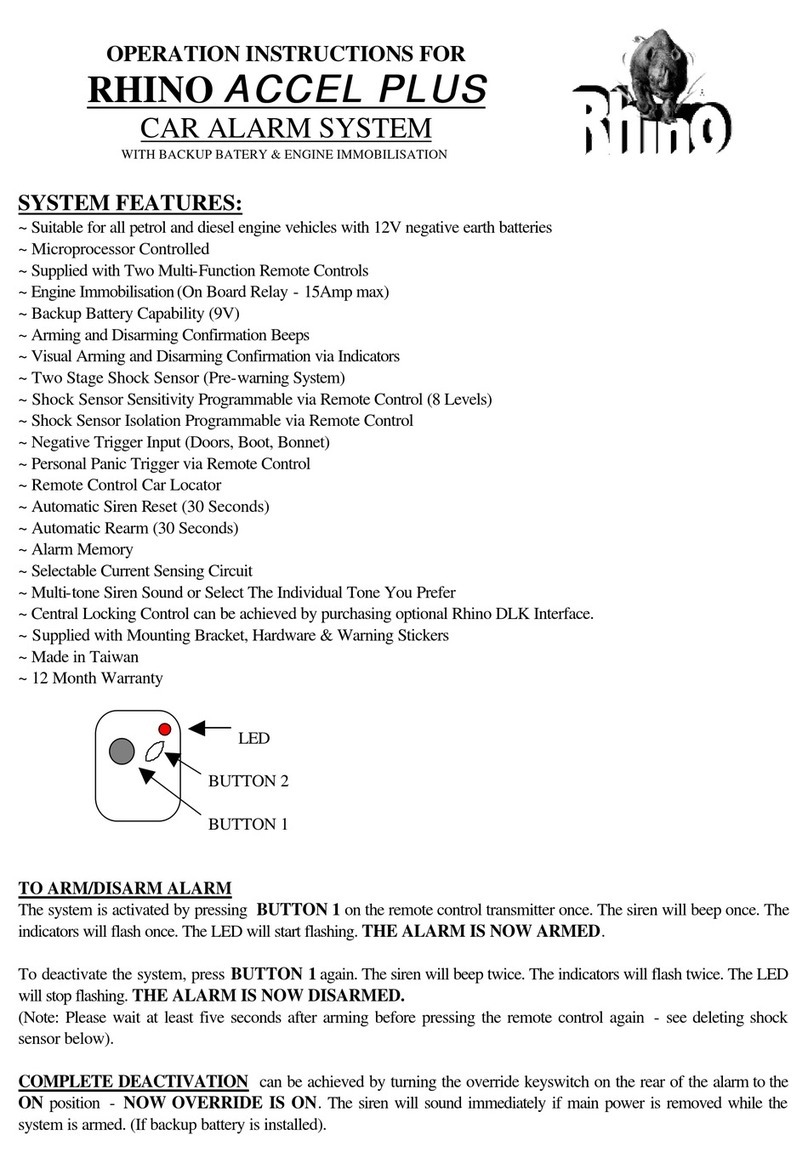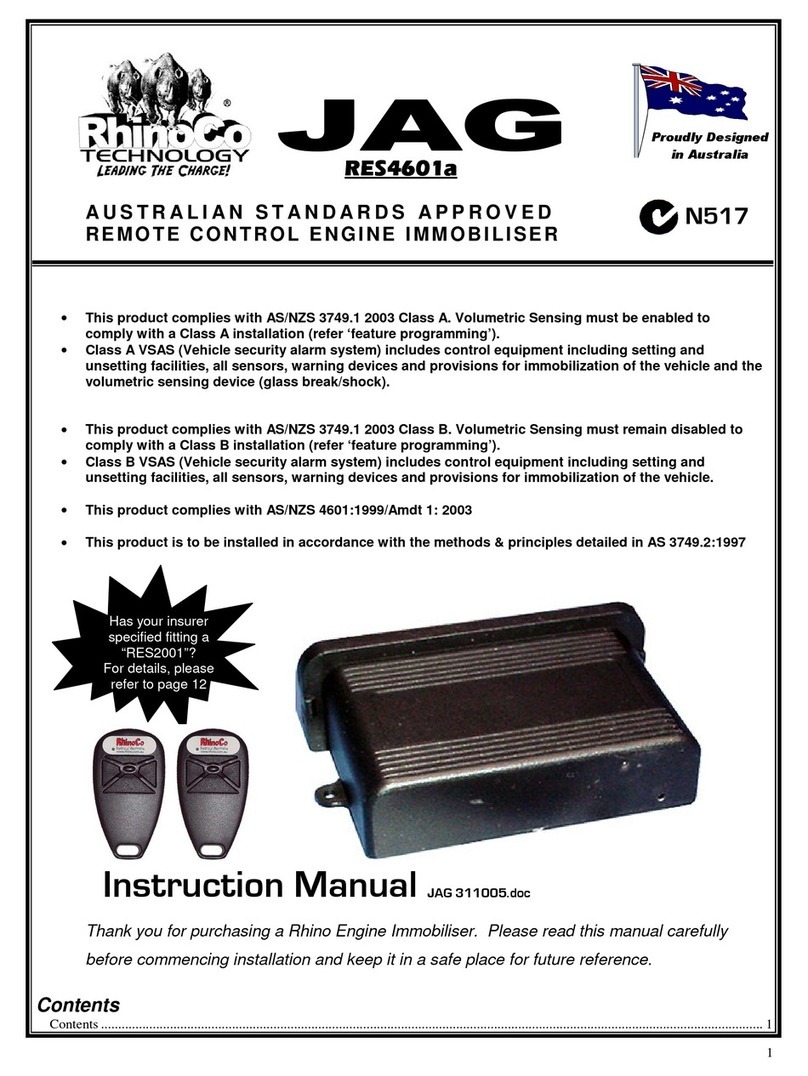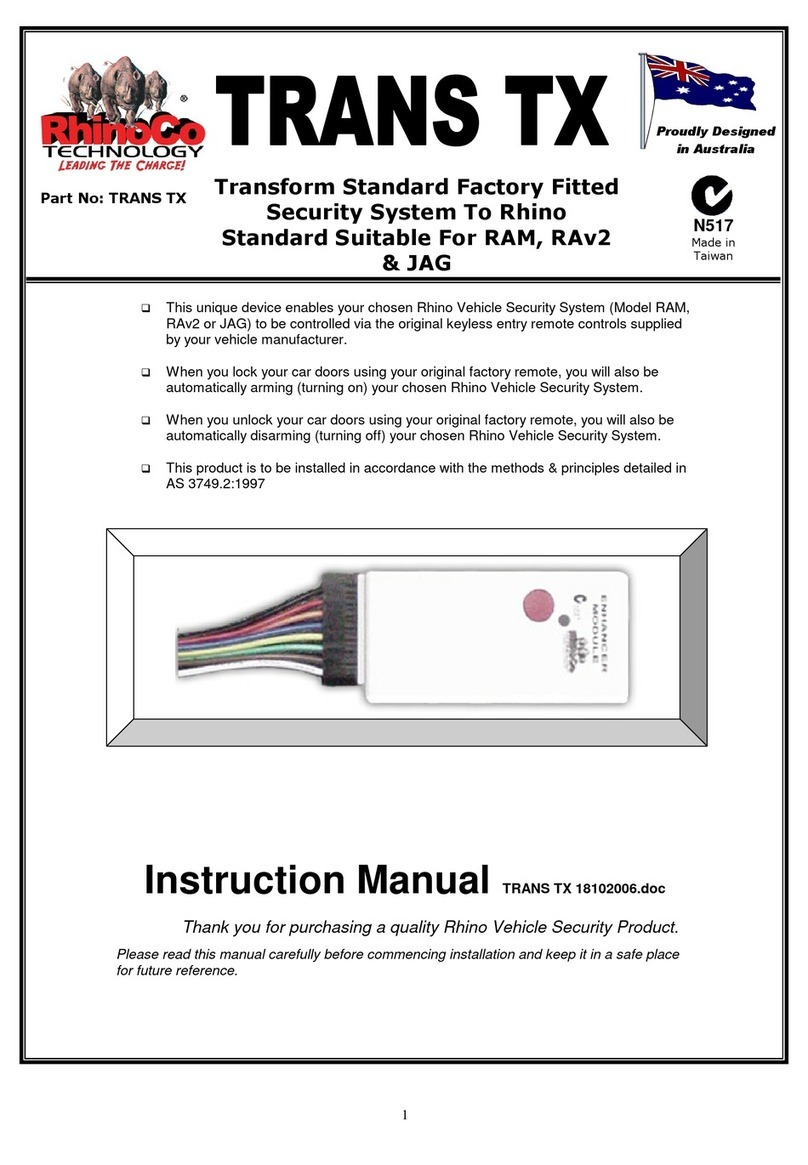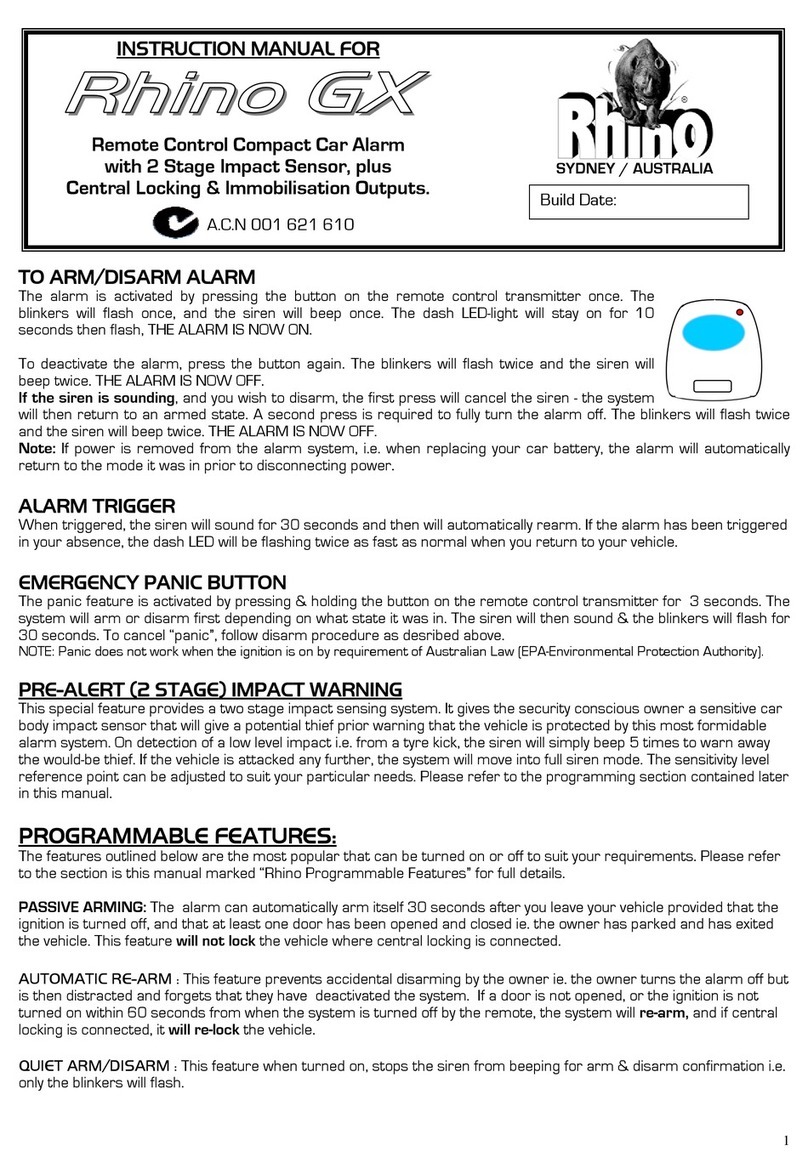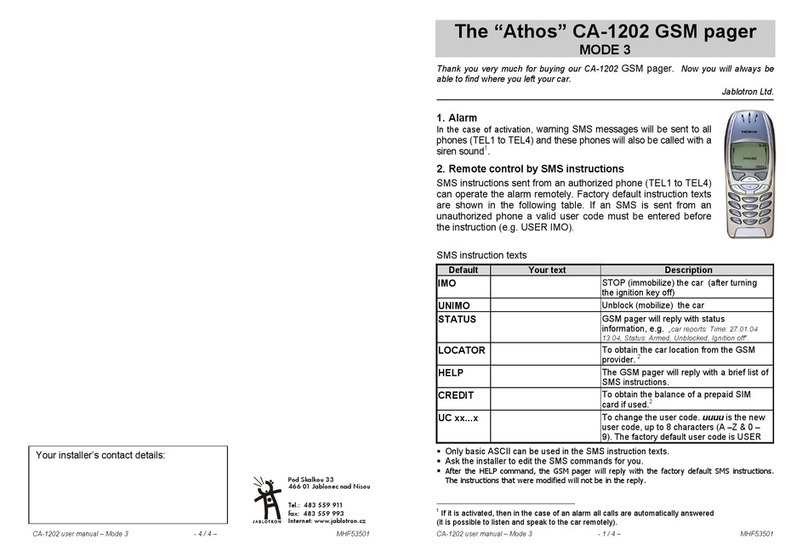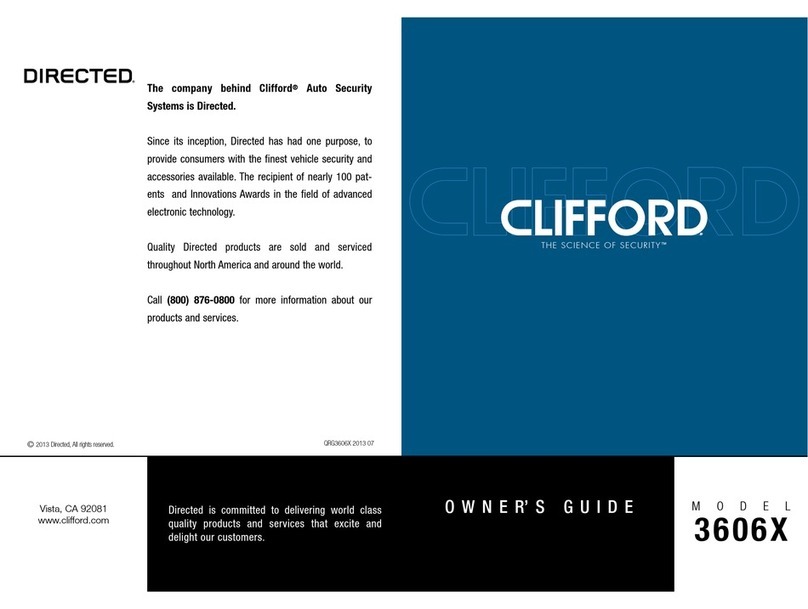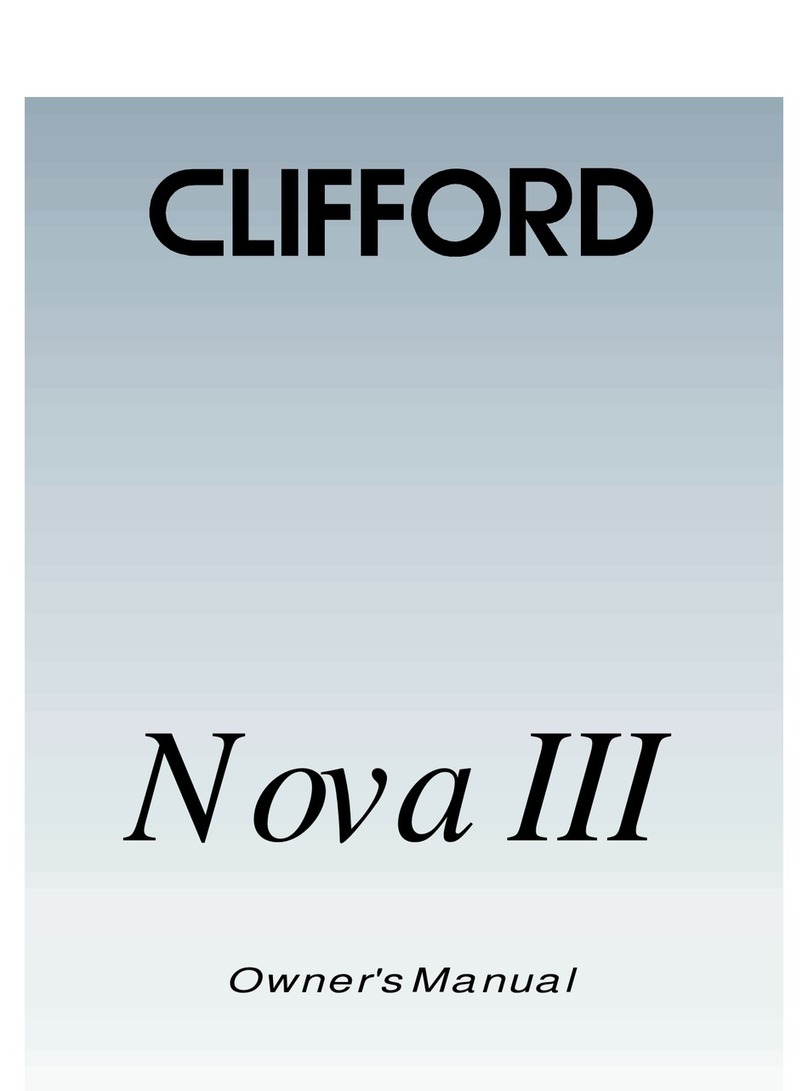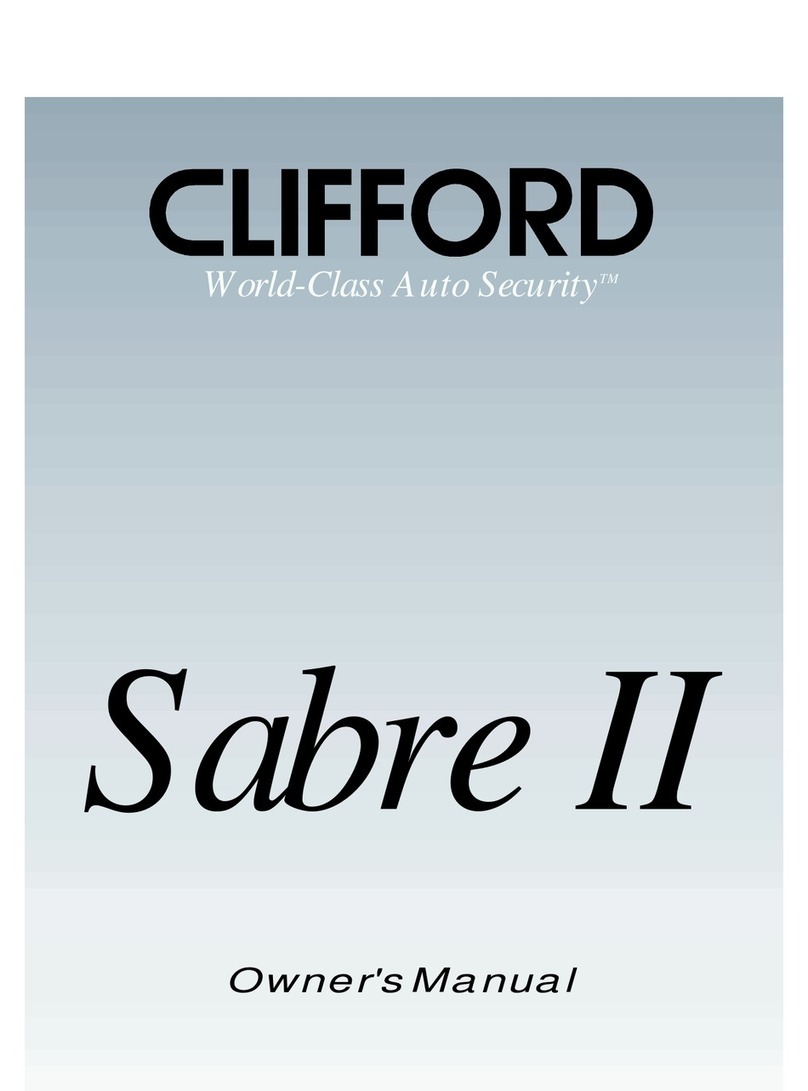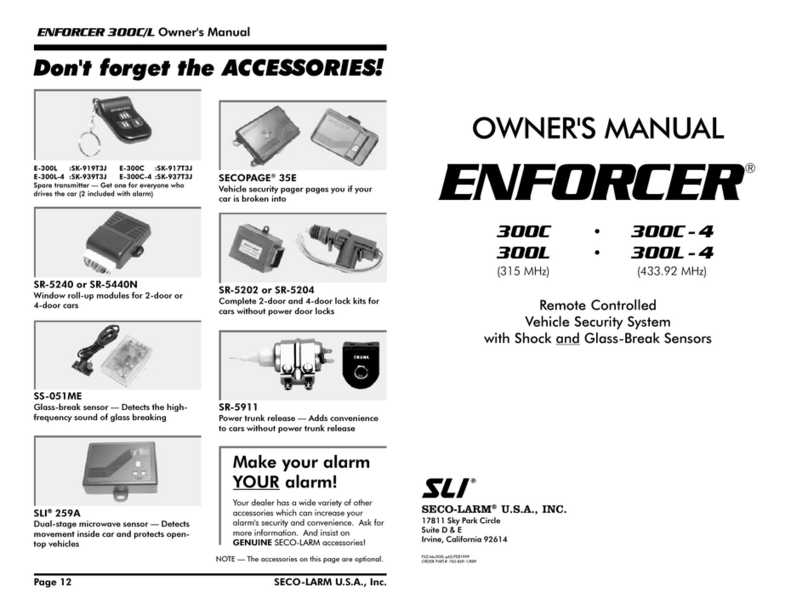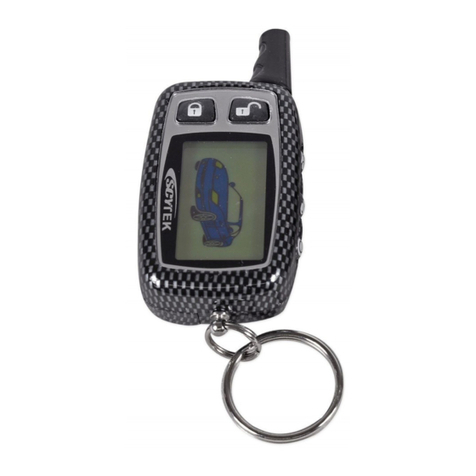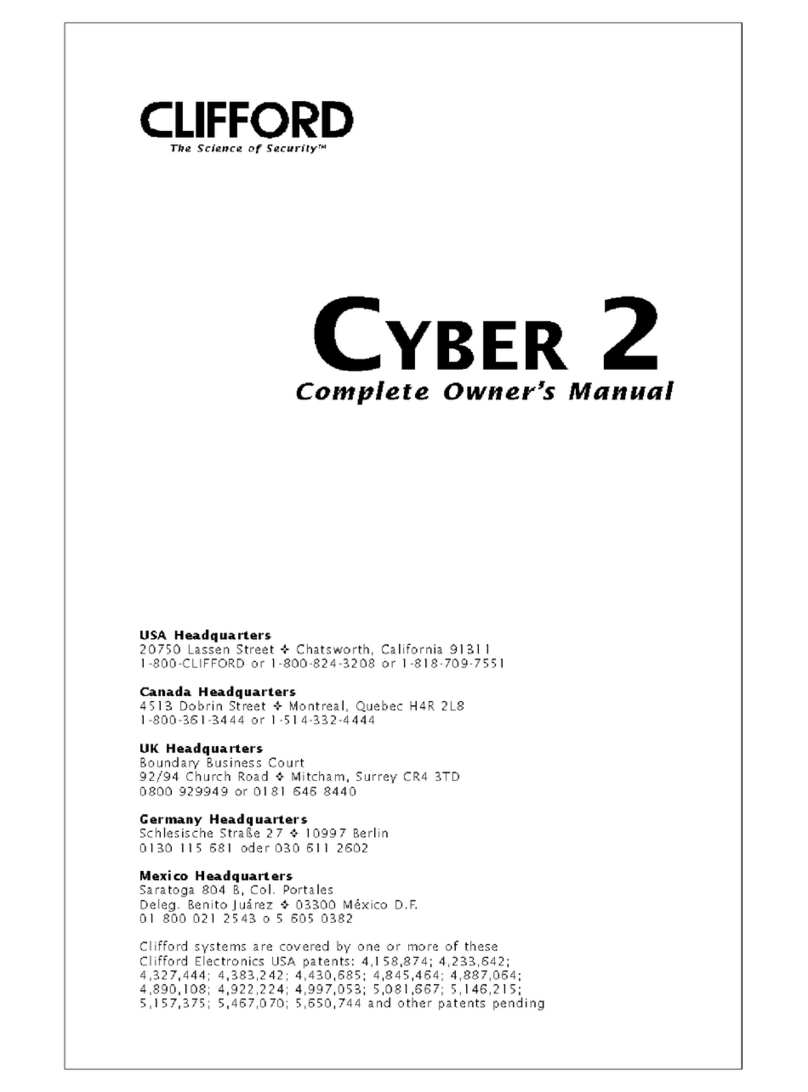2
Contents
Contents......................................................................................................................... 2
Quick Reference Guide ................................................................................................. 4
1. Introduction ............................................................................................................... 5
1.1. Mobile Features.................................................................................................. 5
1.2. Alarm Features ................................................................................................... 6
1.3. Selectable System Features ................................................................................ 6
1.4. What You Get..................................................................................................... 7
1.5. Mobile Phone Unit Safety Precautions .............................................................. 8
1.5.1. Aircraft Safety ............................................................................................. 8
1.5.2. Electronics in Medical Equipment.............................................................. 8
1.5.3. Precautions in the Event of Loss/Theft ....................................................... 8
1.5.4. Important Information................................................................................. 8
2. Installation & Operation............................................................................................ 9
2.1. Planning the Installation..................................................................................... 9
2.2. Installing and Wiring The Main Unit............................................................... 10
2.2.1. Extended Wiring Descriptions .................................................................. 11
2.2.2. Installing the Glass Break Microphone..................................................... 12
2.3. Installing & Wiring the Siren........................................................................... 12
2.4. Installing The Antenna..................................................................................... 14
2.5. Sim Card Setup And Functionality .................................................................. 14
2.6. Accessibility Note ............................................................................................ 15
2.7. Alarm Messages ............................................................................................... 15
2.8. SMS Command Messages................................................................................ 16
2.8.1. To Arm The Alarm.................................................................................... 16
2.8.2. To Dis-Arm The Alarm............................................................................. 17
2.8.2.1. If Your Keys Are Locked in the Vehicle ........................................... 17
2.8.3. Emergency Panic....................................................................................... 18
2.8.4. System Status Report ................................................................................ 18
2.8.5. Car Battery Low Warning......................................................................... 19
2.8.6. Boot Release.............................................................................................. 19
2.8.7. Built-in Torch............................................................................................ 19
2.8.8. Auto Bypass .............................................................................................. 20
2.8.9. Door Ajar Warning.................................................................................... 20
2.8.10. Auto Immobilise...................................................................................... 20
2.8.11. Passive Arming ....................................................................................... 20
2.8.12. Automatic Re-Arm.................................................................................. 20
2.8.13. Pre-Alert Impact Warning With ETS
TM
................................................ 21
2.8.14. Glass Break Sensor.................................................................................. 21
2.8.15. PAT
TM
– Past Alarm Trigger Memory/History .................................... 22
2.8.16. SMS Controlled Relay Output ................................................................ 22
